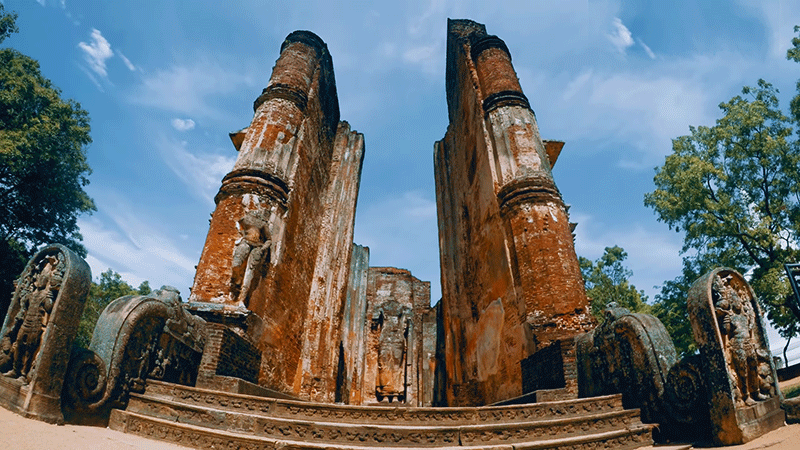5 MOST IMPORTANT CITIES IN THE CULTURAL TRIANGLE OF SRI LANKA
North of Kandy, the lush, tangled slopes of the central highlands give way to the arid zone’s lowlands. Solitary mountain peaks rise sharply above the flatlands, and thorny shrubs and rainforest dominate much of this scorching, arid region. Even though the environment wasn’t ideal, the early Sinhalese civilization was centred in the magnificent towns of Anuradhapura and Polonnaruwa, whose impressive monuments still serve as compelling reminders of the golden age of Sinhalese culture. What was once known as Rajarata, or “The King’s Land,” in the north is today more commonly referred to as the cultural triangle of Sri Lanka.
Table of Contents
- WHAT IS THE CULTURAL TRIANGLE OF SRI LANKA?
- WHAT ARE THE FIVE MOST IMPORTANT CULTURAL TRIANGLE CITIES SRI LANKA?
- WHAT ARE THE 10 BEST THINGS TO DO IN THE CULTURAL TRIANGLE CITIES OF SRI LANKA?
- HOW TO GET TO SRI LANKA’S IMPORTANT CULTURAL TRIANGLE CITIES?
- WHAT ARE THE IMPORTANT HISTORICAL MONUMENTS IN THE CULTURAL TRIANGLE CITIES OF SRI LANKA?
- CULTURAL TRIANGLE CITIES OF SRI LANKA
- IMPORTANT PLACES OF SRI LANKA CULTURAL TRIANGLE TOUR
- ABOUT THE COLOURFUL CULTURE OF SRI LANKA
- ADVANCE KNOWLEDGE IN HYDRAULIC AND TRIGONOMETRY
- HISTORICAL PLACES OF CULTURAL TRIANGLE OF SRI LANKA
- BUDDHISM HAS A PROMINENT PLACE IN THE CULTURAL TRIANGLE OF SRI LANKA
- WHAT IS THE BEST TIME TO VISIT CULTURAL TRIANGLE SRI LANKA?
- WHAT ABOUT SRI LANKA’S CULTURAL TRIANGLE?
- MAP OF SRI LANKA CULTURAL TRIANGLE
- HOW MUCH TIME NEEDED TO EXPLORE THE CULTURAL TRIANGLE OF SRI ALNKA?
- HOW MUCH IS THE ENTRANCE FEES TO THE CULTURAL TRIANGLE OF SRI LANKA?
- ENTRANCE FEES TO IMPORTANT PLACES IN THE CULTURAL TRIANGLE SRI LANKA AS FOLLOWS
- ANURADHAPURA IS THE MOST HISTORICAL CITY IN THE CULTURAL TRIANGLE SRI LANKA
- CULTURAL TRIANGLE CITY SRI LANKA: POLONNARUWA
- ICONIC CULTURAL TRIANGLE CITY SRI LANKA: SIGIRIYA
- DAMBULLA GOLDEN CAVE TEMPLE
- KANDY, MOST VISITED TEMPLE IN THE CULTURAL TRIANGLE SRI LANKA
- VISIT 4 IMPORTANT SITES WITH CULTURAL TRIANGLE TOUR
- HOW DO I FIND ACCOMMODATION IN THE CULTURAL TRIANGLE SRI LANKA?
- WHAT IS THE BEST TIME TO VISIT CULTURAL TRIANGLE OF SRI LANKA?
- WEATHER PATTERN IN THE CULTURAL TRIANGLE OF SRI LANKA
- 3 POPULAR SRI LANKA CULTURAL TRIANGLE ITINERARIES
- HOW MUCH DOES IT COST FOR THE CULTURAL TRIANGLE TOUR? US$ 190.00 P.P
- CULTURAL TRIANGLE CITY TOUR SRI LANKA
- CULTURAL TRIANGLE CITY TOUR: VISITING MINNERIYA PARK
- IMPORTANT FACTS ABOUT CULTURAL CITY TOUR SRI LANKA
- DAY 1 TOUR TO CULTURAL TRIANGLE CITY SRI LANKA: COLOMBO-DAMBULLA-SIGIRIYA
- EXPLORING DAMBULLA TEMPLE ON THE CULTURAL TRIANGLE CITY TOUR
- VISITING SIGIRIYA ROCK ON THE SRI LANKA CULTURAL TRIANGLE CITY TOUR
- CULTURAL TRIANGLE CITY TOUR: VISITING SIGIRIYA ROCK
- Day 2 CULTURAL TRIANGLE CITY TOUR
- CULTURAL TRIANGLE CITY TOUR: VISITING SPICE GARDEN
- KANDY CITY TOUR
- VISITING TOOTH RELIC TEMPLE
- Day 3 SRI LANKA CULTURAL TRIANGLE ITINERARY:
- VISITING TEA FACTORY
- CAN I DRIVE TO BEACH RESORT AFTER THE CULTURAL TRIANGLE CITY TOUR?
- THINGS TO KNOW BEFORE VISITING CULTURAL TRIANGLE CITIES OF SRI LANKA
- WHY YOU SHOULD BOOK THE TOUR TO CULTURAL TRIANGLE CITIES OF SRI LANKA WITH SEERENDIPITY?
WHAT IS THE CULTURAL TRIANGLE OF SRI LANKA?
Cultural triangle cities Anuradhapura, Polonnaruwa, and Kandy are symbols of Sri Lanka’s rich cultural heritage, but Sri Lanka hides it.
Since ancient times, the plains located in the northern part of Sri Lanka have been known as Rajarata, which literally means “The King’s Land.” On the other hand, in more recent times, this phrase has largely fallen away, and now many refer to the region as the Cultural Triangle. The term for this region comes from an endeavour by the government in the 1970s to rehabilitate and promote the region’s hugely devastated ruins for the modern tourism sector. The “golden triangles” of Thailand and India may have had an influence on this endeavor, which is where the name originated. The three sites that make up this fictitious triangle are the ancient Sinhalese capital cities of Kandy, located in the south; Anuradhapura, located in the north; and Polonnaruwa, located in the east. Kandy’s history is rather distinct from the history of the other cities, both chronologically and geographically; therefore, this tourist-oriented construct actually provides a rather distorted sense of the past of the region. This is due to the fact that Kandy’s history began much later than that of the earlier capitals.
The vast majority of tourists that go to the Cultural Triangle from Kandy do so by heading immediately north up the main route to Dambulla, Sigiriya, and points further afield. On the other hand, if you have your own vehicle, you may make a number of stops along the way that are well worth your time. Two of these are placed directly on the major roadway; the well-known monastery of Aluvihara and the lovely little temple at Nalanda are the two that come to mind first.
Along the main route that runs between Kandy and Dambulla, there are also a great many spice gardens that can be seen. The climate in this area, which lies roughly in the middle ground between the hill country and the coastal plains, is just right for gardening, making it an ideal location. If you’ve ever been curious about the origins of the ingredients used in Sri Lankan cuisine, now is the ideal moment to find out more about those origins. In spite of the fact that admission is typically free, you will be expected to pay excessive fees in order to have the opportunity to observe the different plants and bushes, some of which are spices.
WHAT ARE THE FIVE MOST IMPORTANT CULTURAL TRIANGLE CITIES SRI LANKA?
- Anuradhapura
- Polonnaruwa
- Sigiriya
- Dambulla
- Kandy
WHAT ARE THE 10 BEST THINGS TO DO IN THE CULTURAL TRIANGLE CITIES OF SRI LANKA?
- Visiting Anuradhapura historical city
- Visiting Polonnaruwa ancient city
- Sigiriya rock climb
- Exploring Dambulla cave temple
- Elephant safari at Minnerina national park
- Visiting Tooth relic temple
- Visiting the Royal botanical garden
- Witness Kandyan cultural show
- Visiting Aukana Buddha statue
- Visiting spice garden Matale
HOW TO GET TO SRI LANKA’S IMPORTANT CULTURAL TRIANGLE CITIES?
Usually, most travellers who wish to explore the cultural triangle start their tour in Anuradhapura, while some of them start the cultural triangle tour from Kandy. If you wish to see only important places in the cultural triangle, starting the tour in Anuradhapura or Kandy does not make much difference. But if you wish to explore other important places, such as the mountains in southern Sri Lanka, along with the cultural triangle, it is highly recommended that you begin your cultural triangle tour in Anuradhapura.
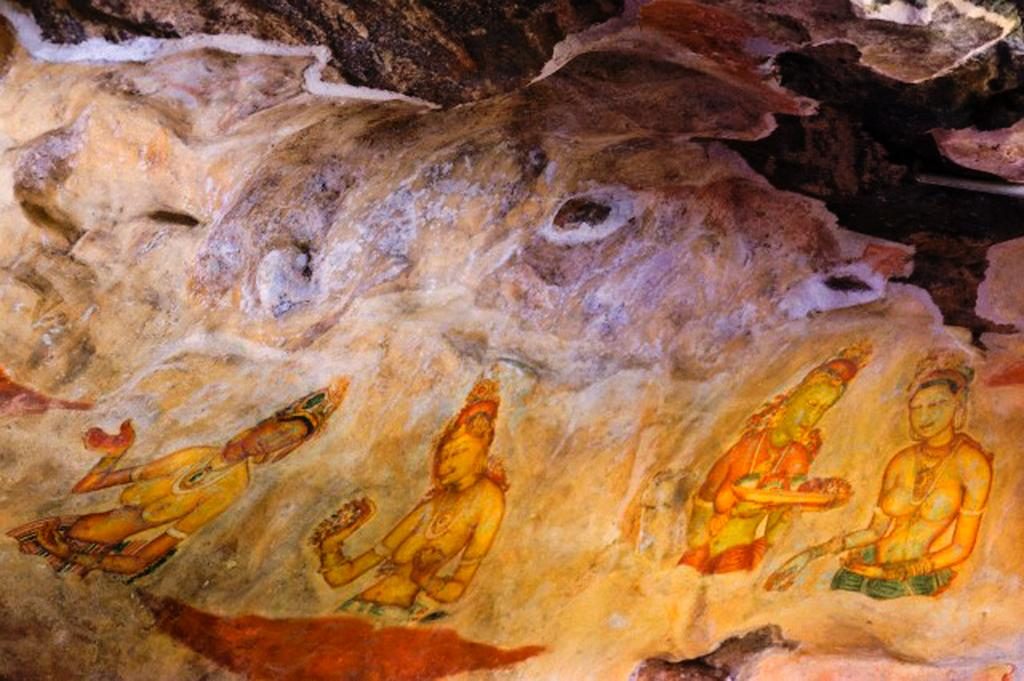
WHAT ARE THE IMPORTANT HISTORICAL MONUMENTS IN THE CULTURAL TRIANGLE CITIES OF SRI LANKA?
- Sri Maha Bodhi
- Ruwanweli Dagoba
- Twin Pond
- Jetawanarama
- Samadhi Buddha
- Parakramabahu Palace
- Rankoth Vehera
- Gal Viharaya
- Sigiriya rock
- Pidurangala temple
- Dambulla cave temple
- Tooth relic temple
CULTURAL TRIANGLE CITIES OF SRI LANKA
The cultural triangle of Sri Lanka is located in the north-central province, and it hides hundreds of historical monuments. The five most important cities in the cultural triangle of Sri Lanka are Anuradhapura, Polonnaruwa, Sigiriya, Dambulla, and Kandy. The travellers can find hundreds of stunning historical marvels in these cities in the form of dagobas, palaces, lakes, tanks, paintings, and statues. Sri Lanka, today the wonder of Asia, had been a wonder of the world many centuries before.
Sri Lanka, one of the most popular tourist destinations in southern Asia, has a large number of historical attractions. Most of these historical places are top-notch holiday attractions in the country and are included in most road trips in Sri Lanka. Most of these historical places are concentrated in the so-called ‘cultural triangle’.
Most tourists who make round-trip tours in Sri Lanka visit the attractions in the cultural triangle. It is highly unlikely to get a tour itinerary without these places as attractions to visit.
IMPORTANT PLACES OF SRI LANKA CULTURAL TRIANGLE TOUR
The cultural triangle of Sri Lanka is located in the north-central province of Sri Lanka. The three corners of the triangle are Anuradhapura, Polonnaruwa, and Kandy. The cultural triangle of Sri Lanka, as the name denotes, is comprised of a large number of cultural and historically important places such as Anuradhapura, Polonnaruwa, Sigiriya, Dambulla, Pidurangala, and Minneriya.
ABOUT THE COLOURFUL CULTURE OF SRI LANKA
Centuries ago, the Sri Lankan civilization was unfortunately targeted by the south Indian Tamil invaders, which was the major reason for the downfall of this great culture. Even though Sri Lankan kings managed to regain the kingship from the invaders, the damages done to the cities were beyond repair. There had been many such invasions, destroying the great achievements of the Sinhalese people in the past. Today, some of their great achievements can still be seen in the cultural triangle of Sri Lanka.
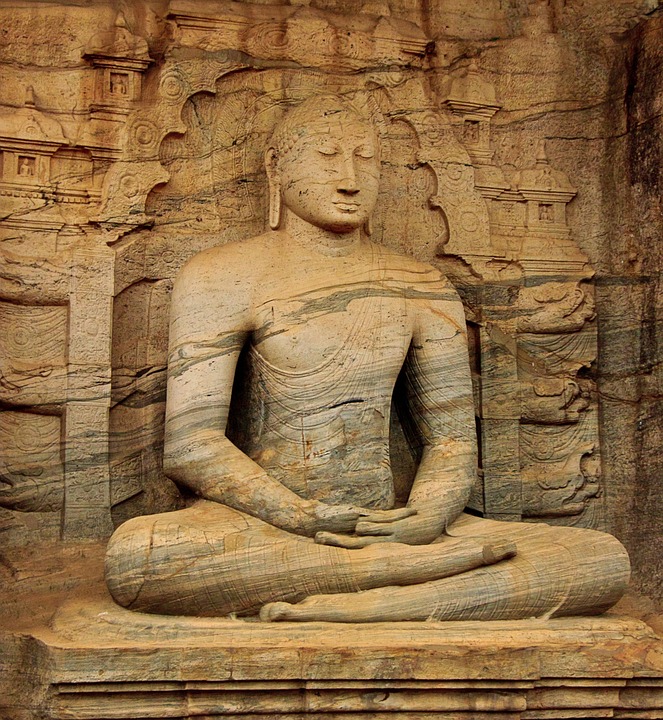
ADVANCE KNOWLEDGE IN HYDRAULIC AND TRIGONOMETRY
The constructions of ancient Sinhalese engineers show advanced knowledge of trigonometry and a thorough grasp of hydraulic principles. The imposing ancient constructions such as Abhyagiri Dagoba and Parankama Samudra take modern engineers by surprise. Their stupendous achievements are unbelievable, and the technical details of their construction are very precise. Therefore, most ancient structures are still in very good shape, unless they have been destroyed by the invader. Very precise in technical detail.
At the same time, they had a very rich taste for literature and the arts. Their arts and crafts boast some of the masterpieces of the old world, such as lovers in the Isurumuniya museum, Sigirya paintings, Dambulla statues, and Galviha Buddha statues.
In this article, I share some of my favourite monuments from the cultural triangle of Sri Lanka. Life is too short; don’t wait for the perfect moment to explore the achievements of this great culture. Therefore, pack your case and set off for the cultural triangle of Sri Lanka. You have a great opportunity to explore one of the advanced civilizations that existed in the past.
HISTORICAL PLACES OF CULTURAL TRIANGLE OF SRI LANKA
Sri Lanka, one of the most popular tourist destinations in southern Asia, has a large number of historical attractions. Most of these historical places are top-notch holiday attractions in the country and are included in most road trips in Sri Lanka. Most of these historical places are concentrated in the so-called ‘cultural triangle’.
The three corners of the cultural triangle are formed by Kandy, Anuradhapura, and Polonnaruwa. Most tourists who make round-trip tours in Sri Lanka visit the attractions in the cultural triangle. It is highly unlikely to get a tour itinerary without these places as attractions to visit.
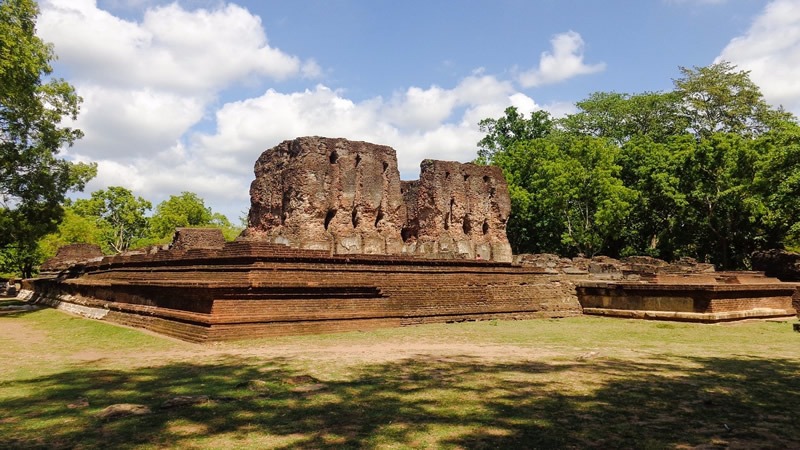
BUDDHISM HAS A PROMINENT PLACE IN THE CULTURAL TRIANGLE OF SRI LANKA
Historical Buddhist temples, palaces, Buddha statues, gardens, lakes, and many other monuments can be seen in the cultural triangle.
Sri Lankan civilization is one of the oldest civilizations in the world. First, it emerged in the 4th century BC and evolved for many thousands of years. During this period, Sri Lankan civilizations were enriched by other contemporary civilizations in the world, such as Rome and Greece. This ancient civilization was a strong believer in Buddhism, and it was the foundation of their culture.
The kings and queens of ancient Sri Lanka had managed to build large constructions such as Jetawanarama, which was the largest Buddhist construction by the 5th century AD and was as big as the second pyramid in Giza. Apart from Dagobas, historical places in the cultural triangle are comprised of palaces, bath ponds, image houses, dwelling houses for monks, audience halls, chapter houses, and many other religious places, such as Jayasri Maha Bodhi.
WHAT IS THE BEST TIME TO VISIT CULTURAL TRIANGLE SRI LANKA?
From January to September, all months except April have fairly dry weather with occasional rainfall.
The cultural triangle is situated in the dry zone of Sri Lanka, which means the few rainfalls in the cultural triangle sites are much lower compared to the rainfall in the cities on the west and south coasts. However, the cultural triangle also receives a considerable amount of rainfall, and much of it comes from the north-east monsoon.
The rainfall in the month of April can increase in the cultural triangle cities, while usually September, October, November and December also record increased rainfall throughout the cultural triangle. During the heavy rainfall, some places in the cultural triangle are coming under the water, and movement across the regions can be hindered.
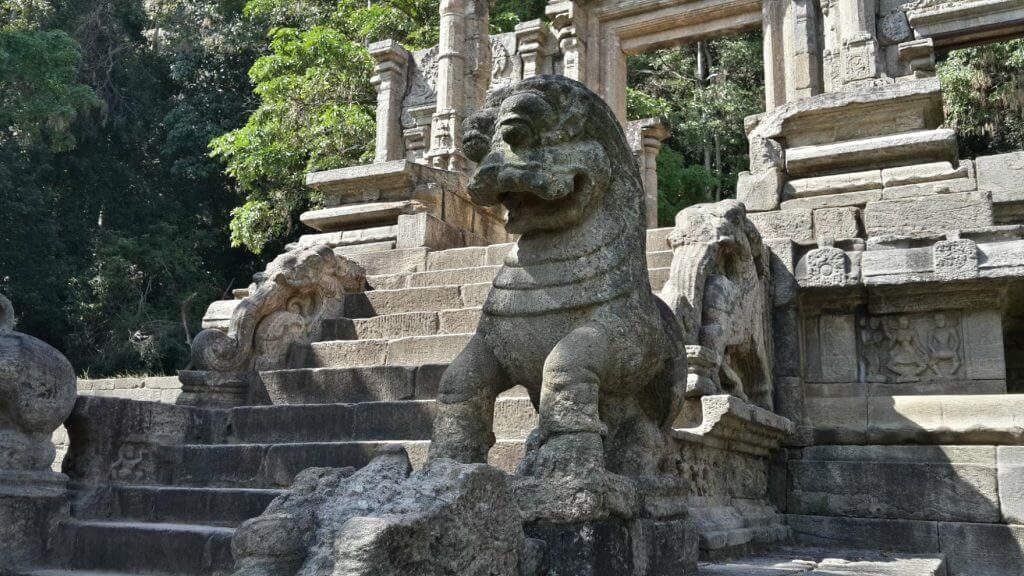
WHAT ABOUT SRI LANKA’S CULTURAL TRIANGLE?
You may be wondering why the majority of attractions in the cultural triangle are to be found in the dry zone of Sri Lanka. According to the archaeologists, the reason is that ddry zonehad been the region, where ancient culture most flourished.
The dry zone had the most appropriate conditions for the agricultural lifestyle of ancient Sri Lankan society. They were dependent on cultivation, such as rice, and lived in places where water was readily available. The people of ancient Sri Lanka had built large-scale irrigation networks in order to supply water for agricultural lands. These irrigation networks are still in use, and tourists have the opportunity to see some of the gigantic reservoirs and canals achieved by the ancient engineers.
Along with material development, this ancient civilization concentrated on spiritual development as well. They had great dedication to their religion and built a gigantic temple and monasteries for monks. These monasteries and temples were adorned with paintings, sculptures, murals, stone and wood carvings, and many other elements.
MAP OF SRI LANKA CULTURAL TRIANGLE
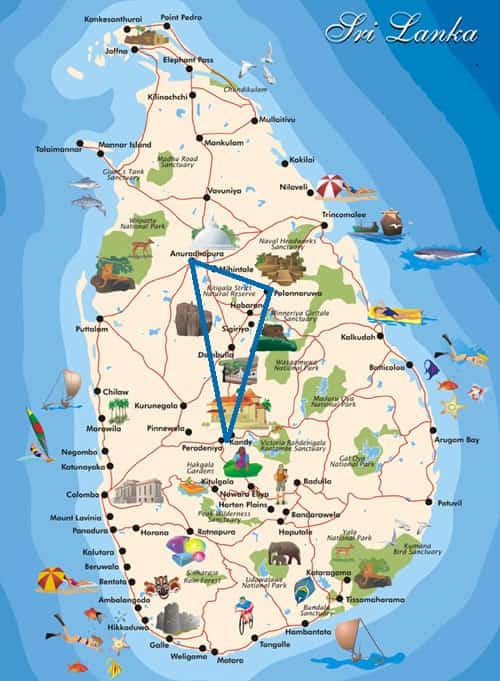
Today, Sri Lanka has its own identity with regards to the arts and crafts due to the ancient artisans of Sinhalese culture. The cultural triangle is considered a treasure trove on the island, and some of the valuable items discovered during the excavations are very rare and of high value.
According to the archaeologist, only a portion of the treasure of this great culture has been unearthed so far, and there is much more to unearth. Sri Lanka is a holiday destination that offers a wide range of products for tourists, from pristine beaches to relax to the unbelievable achievements of one of the most ancient cultures in the world.
All visitors to these sacred places are supposed to dress in a particular manner to uphold their religious values. There is a set of rules that every visitor to religious sites observes while visiting sacred places in Sri Lanka. If you are wondering what these rules are, check out this article “13 RULES TO OBSERVE WHILE VISITING SRI LANKA BUDDHIST TEMPLE, SRI LANKA TEMPLE DRESS CODE TEMPLE OF THE TOOTH DRES’ CODE“.
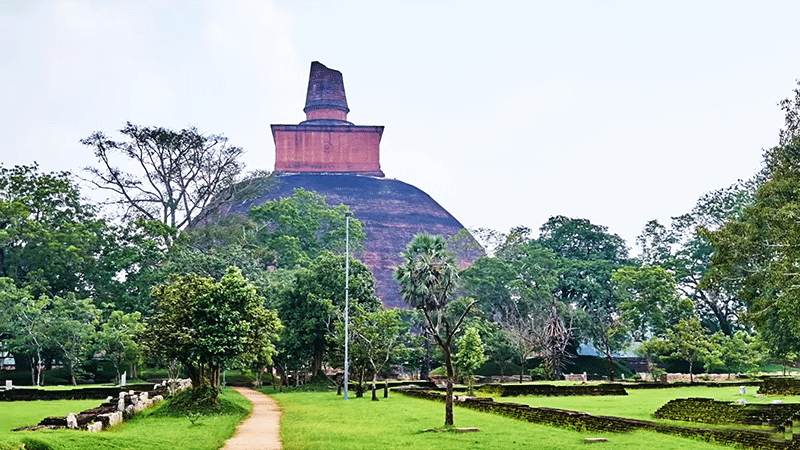
SRI LANKA 7-DAY TOUR WITH CULTURAL TRIANGLE
HOW MUCH TIME NEEDED TO EXPLORE THE CULTURAL TRIANGLE OF SRI ALNKA?
The duration of the cultural triangle tour highly depends on the time you spent to explore the historical marvels. We usually organize the cultural triangle tour from Colombo and the duration of the tour is 3 days. This three days tour cover all important sites in the cultural triangle and participants can see the places without any hassle. The same tour can be done in 2 days (if you have only limited time), but then the time spent on sites limited and travellers do not have much time to relax during the tour.
HOW MUCH IS THE ENTRANCE FEES TO THE CULTURAL TRIANGLE OF SRI LANKA?
The cultural triangle is under the purview of the archaeological department and central cultural fund, which are government institutions. The visitors should pay the entrance fees to all sites of the cultural triangle. The entrance ticket can be bought at the main gate of each site. The separate entrance ticket should be bought at each location. Earlier there was a ticket allowing the travellers to enter all places of the cultural triangle but this ticket is not available anymore.
ENTRANCE FEES TO IMPORTANT PLACES IN THE CULTURAL TRIANGLE SRI LANKA AS FOLLOWS
Anuradhapura USD 25
Polonnaruwa USD 25
Sigiriya USD 30
Dambulla Golden cave temple USD 10
The tooth relic temple USD 10
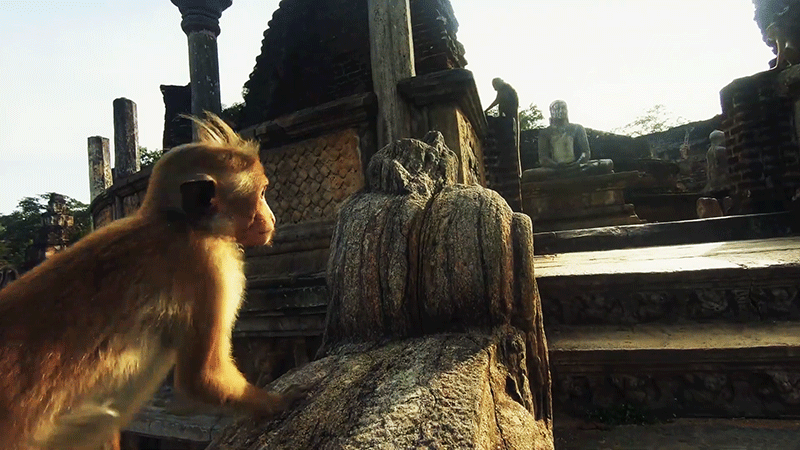
ANURADHAPURA IS THE MOST HISTORICAL CITY IN THE CULTURAL TRIANGLE SRI LANKA
If you start the cultural triangle tour from Anuradhapura you can proceed in the southward direction from Anuradhapura exploring other important sites in the cultural triangle such as Sigiriya, Polonnaruwa, Dambulla and Kandy. After visiting the cultural triangle then you can continue the journey further in the direction of southern Sri Lanka and explore Mountains, tea garden and Yala national park. Later you will be able to travel to southern and west coast beaches and Colombo.
Usually, most Sri Lanka tour packages offered by Sri Lanka tour operators such as Seerendipity tours start in Anuradhapura and continues through mountains, southern Sri Lanka and west coast. It is the most convenient and time-saving route while it saves a lot of money for travellers.
HISTORY OF ANURADHAPURA
Anuradhapura was founded by King Pandukabhaya in the 4th century B.C and Anuradhapura was the first capital of ancient Sri Lanka. Anuradhapura was the capital of Sri Lanka till 11th century A.D. and the city was the capital of Sri Lanka for more than a thousand years. Anuradhapura had been the centre for Buddhism and it had been 40 km² in extent.
Anuradhapura considered being one of the oldest continuously inhabited cities in the world. Same times it had been one of the most stable and durable centres of political power and urban life in South Asia. Today Anuradhapura is being visited by many foreign as well as local tourists, owing to its well-preserved ruins of ancient Lankan civilization. Some of the religious edifices of Anuradhapura are more than 2000 years old and in extent second only to the structures of Egypt.
A large number of palaces, temples, dagobas, parks, moats, ponds, reservoirs and many other historical buildings are scattered all over the historical city. Some of the buildings are not yet identified by the historians and a large part of the city is yet to be uncovered. Anuradhapura is one of the world heritage sites in Sri Lanka and attracts a large number of local and foreign travellers since its discovery in nearly 18’s.
Anuradhapura is a must visited place for travellers, who wish to see the rich historical past of the island. Anuradhapura is worth to be considered as a destination for a short tour. It has a large number of ruins dating back to the 2nd century BC. If you visit Sri Lanka just for a beach holiday and water sports, you might miss one important part of the Sri Lankan life. Sri Lanka is one of the few countries that were continuously inhabited since the pre-Christian era.
The historical cities such as Anuradhapura showcase the knowledge of ancient inhabitants in the fields of architecture, engineering, water management, Ayurveda medicine and art & craft. Their dedication to the religion is testified by the gigantic temples and other religious buildings. The magnitude size of the ancient city demands you to spend several days if you wish to study all the monuments.
In spite of being a large city, it is calm and serene. The city has a high profile among the historical attraction in the country. Following are some of the important places that can be covered within several hours and important attractions with religious importance.
IMPORTANT HISTORICAL PLACES IN ANURADHAPURA
Thuparama is the oldest Dagoba in the cultural triangle of Sri Lanka. Thuparama dagoba built by King Devanampiyatissa and one of the oldest constructions in the historical city of Anuradhapura.
Anuradhapura is an archaeological zoo and has a large number of historical monuments. I hereby listed some of the most important places in the city.
- Abhayagiri Monastery complex
- Jetawana monastery complex
- Palace of King Vijayabahu
- Sri Maha Bodhi
- Brazen palace
- Ruvanveliseya Dagoba
- Thuparama Dagoba
- Dakkina stupa
- Mirisaveti Dagoba
- Isurumuniya
- Mihintale
- Aukana Buddha Statue

VISITING ANURADHAPURA
You will visit Anuradhapura on the first day of this Sri Lanka cultural triangle tour. Anuradhapura is the first capital of Sri Lanka and darting back to 3rd century B.C. According to the historical information, Anuradhapura played the role, the capital of Sri Lanka, for many centuries, since it’s inception in 3rd century BCE. However, as the fame of this flourishing city grew exponentially, it became a target of south Indian invaders, whom it is easy to access Anuradhapura from south India, and which led a never-ceasing Indian invasion.
The city was equipped with palaces, temple complexes, gardens, hospitals and living quarters for people. Today the city is a UNESCO world heritage site due to its cultural and historical importance. You will be accompanied to dozens of important historical sites in Anuradhapura and our historian will you a full report to you about these important historical sites.
CULTURAL TRIANGLE CITY SRI LANKA: POLONNARUWA
Polonnaruwa is another important city in the cultural triangle of Sri Lanka. Legend apart, inscriptions suggest that the history of Polonnaruwa dates back at least to the 2nd century AD. In the 6th century, it became a military garrison of some importance to the Sinhalese kings of Anuradhapura. This was because it guarded the vital crossing point of the Mahaweli River from the southern province of Ruhuna, where rebellion was a continuous threat. A century later, the kings of Anuradhapura started to use Polonnaruwa as a country residence.
Polonnaruwa was the second capital of ancient Sri Lanka from the 11th to 13th century. Polonnaruwa is the home for many ancient religious buildings dates back to the pre-Christian era. Along with the religious buildings, one can see the Palaces, Audience halls, Trade stalls, and many Hindu temples. The ruins of Polonnaruwa are younger than the ruins of Anuradhapura and in good shape.
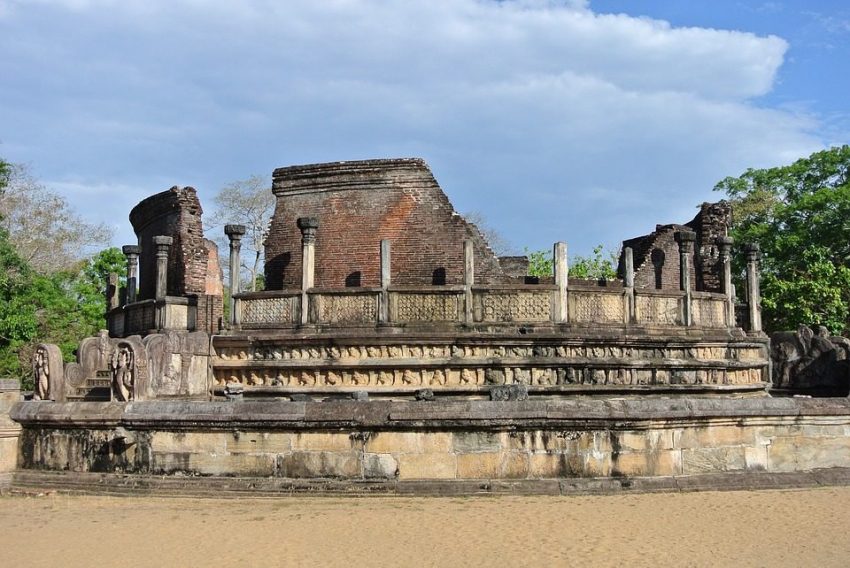
IMPORTANT SITES IN POLONNARUWA
- Pothgul vehera
- council chamber
- Nissankamalla bath
- The palace of King Parakramabahu
- The Quadrangle
- Thuparama
- Menik vehera
- Pabalu vehera
- Rankot Vehera
- Ayurveda hospital
- Galvihara
- Kirivehera
- Tivanka Image house
VISITING SIGIRIYA, POLONNARUWA WITH CULTURAL TRIANGLE TOUR
On the second day of the tour, you will visit Sigiriya rock fortress. Sigiriya rock fortress is another important historical site in the cultural triangle of Sri Lanka and visited by many thousands of travellers every week. The history of Sigiriya rock fortress dates back to 5th century AD, it had been a well-planned city with palaces, gardens, swimming pools, moats, ditches, walls and the fortress was built at the middle of the city.
At Sigiriya, the visitors can see the world-renowned Sigiriya frescoes and mirror wall. They can catch breathtaking sceneries on the surrounding area from the top of the rock. The upward climb to the pinnacle of the rock takes around 1 hour and the downward journey takes around 30 minutes.
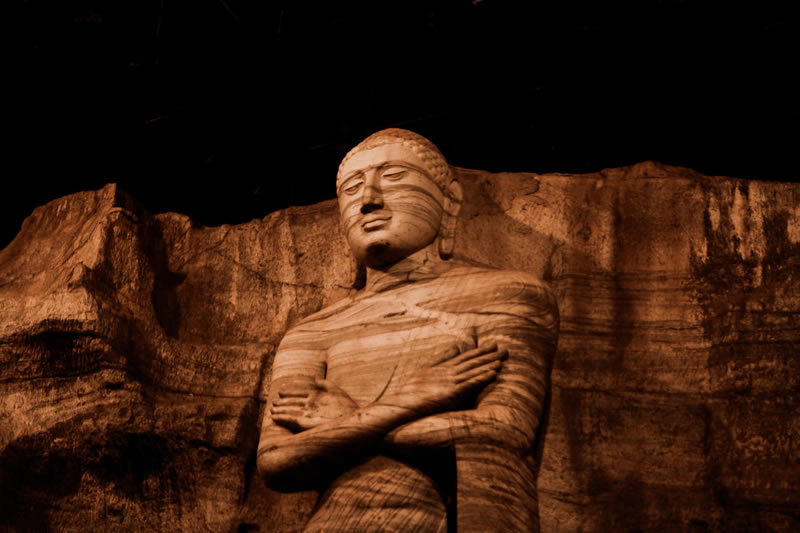
VISIT POLONNARUWA
After visiting the Sigiriya rock fortress you might be hungry and tired, so it is time to have the lunch or just a refreshment. In fact, there is a great deal of distance to cover on foot in Polonnaruwa historical city.
You will proceed to Polonnaruwa after a break, the second capital of Sri Lanka. After the downfall of Anuradhapura, the kings of Sri Lanka had chosen Polonnaruwa as the capital of Sri Lanka. Polonnaruwa was the ruling capital of Sri Lanka for many decades, VijayabahuI, Parakramabahu and Nissannkamalla had been the noteworthy kings, who immensely contributed to the development of the city. Most historical monument such as Galvihara, Thuparama, Hetadage, Atadage at Polonnaruwa is attributed to these three kings.
Due to the invasions that took places in the latter period most of them were damaged. Today Polonnaruwa is another important tourist attractions and a UNESCO world heritage site. Polonnaruwa city tour takes around 2 hours and doesn’t forget to cist the Polonnaruwa museum.
There are many places to visit in Polonnaruwa and you come across image houses, palaces, dagobas, conference halls and many other places important places. Some of them are religious sites and you are required to have dressed at least covering your knees and shoulders.
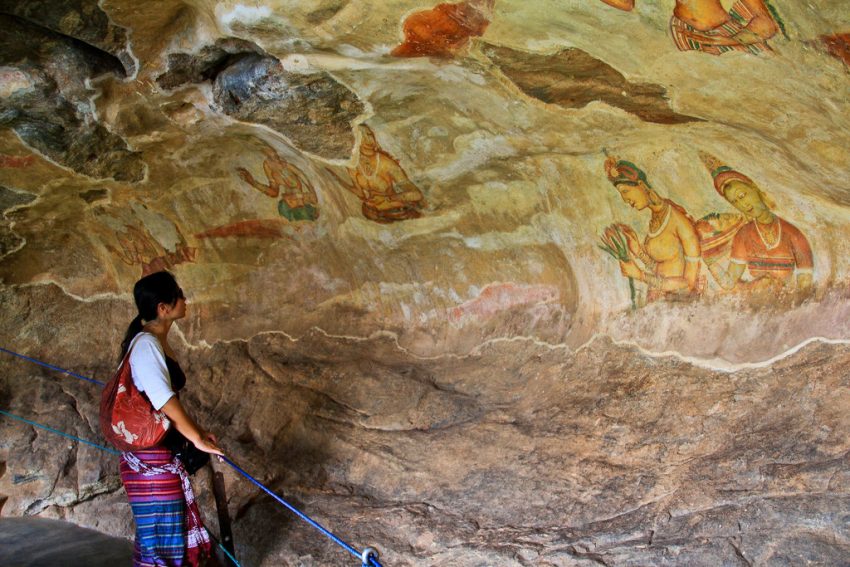
ICONIC CULTURAL TRIANGLE CITY SRI LANKA: SIGIRIYA
Sigiriya considered being one of the oldest landscaped gardens in the world. It is one of the most visited cities in the cultural triangle of Sri Lanka. Sigiriya (Lion’s rock) is an ancient rock fortress and palace ruin in the central Matale District of Sri Lanka, surrounded by the remains of an extensive network of gardens, reservoirs, and other structures.
A popular tourist destination, Sigiriya is also renowned for its ancient paintings (frescos), which are reminiscent of the Ajanta Caves of India. It is one of the seven World Heritage Sites of Sri Lanka.
WHAT ARE THE IMPORTANT PLACE IN SIGIRIYA?
- Sigiriya rock fortress
- Pidurangala temple
SIGIRIYA CLIMB-WHAT YOU NEED TO KNOW?
It is advisable to start the climb early morning to avoid the scorching heat in Sri Lanka’s dry zone. The humidity is also very high here making a sweaty condition. There is a great deal of walk-in Sigiriya and you have to climb a rock on well-laid stairs. Even though there is a well-laid stair the climb of the rock cab very tiring for some people, therefore the site is not recommended for pregnant ladies, old people as well as heart patients. It is a site recommended for travellers with good physical and mental fitness.
WHAT TO WEAR ON SIGIRIYA CLIMB?
A pair of good shoes recommended for hiking makes it easy to climb 200 steps, however not essential. A cotton t-short and pair of shorts is the best possible attires as it is warm and sweaty throughout the climb. Sigiriya is not a sacred site, therefore, you can wear a pair of shorts.
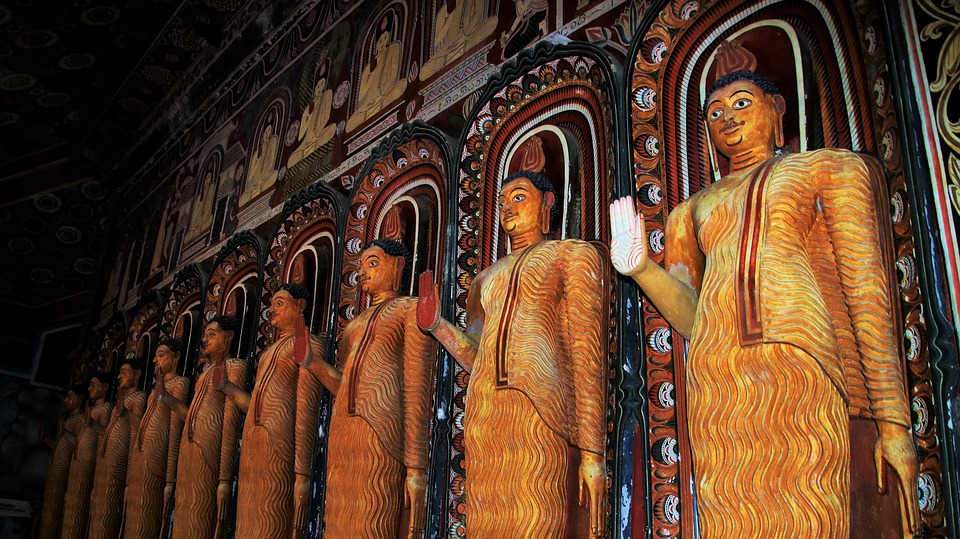
DAMBULLA GOLDEN CAVE TEMPLE
Dambulla golden cave temple is one of the most historical temples in the world. Being home to the cave temple, Dambulla has become one of the most important cities in the cultural triangle of Sri Lanka. Dambulla cave temple is the largest and best-preserved cave temple complex of Sri Lanka.
Dambulla temple complex comprises 5 caves and the temple dates back to 1st century B.C. There are a total of 153 Buddha statues, 3 statues of Sri Lankan kings and 4 statues of god and goddess. The latter 4 include two statues of Hindu gods, Vishnu and Ganesh.
The tooth relic temple of Kandy is the world heritage site in the mountains. The temple is visited by hundreds of thousands of devotees every day and the temple is included in almost every tour package offered in Sri Lanka.
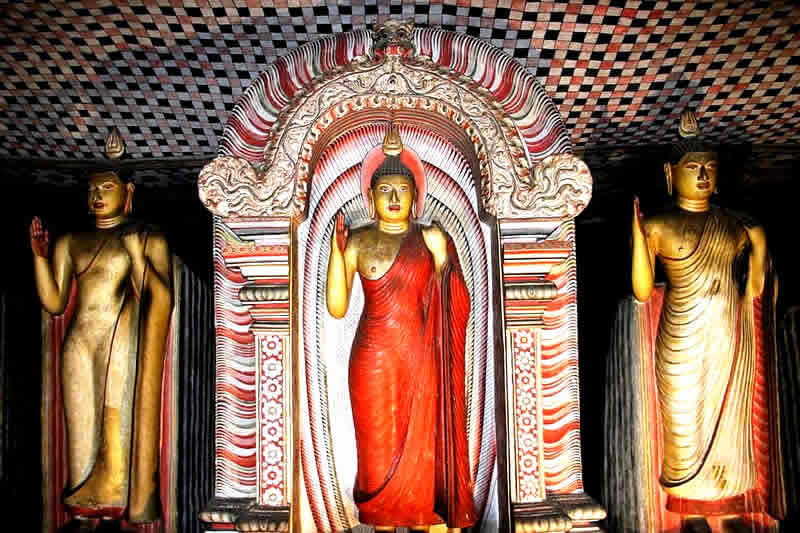
VISITING DAMBULLA CAVE TEMPLE ON THE SRI LANKA CULTURAL TRIANGLE TOUR
On the 3rd of your Sri Lanka cultural triangle tour, you leave for Kandy after the breakfast from your hotel in Sigiriya. The first stop on the day is at Dambulla golden cave temple, which is only 20 minutes away from your hotel in Sigiriya.
The temple is located about 300 meters above the ground. The visitors need to climb the rock on the staircase to reach the temple on the rock. Dambulla golden cave temple is another UNESCO world heritage site in Sri Lanka. Here you can see hundreds of statues and wall painting, the temple is dating back to the 1st century BC.
After Dambulla golden cave temple the travellers proceed to the tooth relic temple of Kandy, which is another important historical site and a UNESCO world heritage site included in the Sri Lanka cultural triangle tour. The tooth relic temple is the most important Buddhist temple in Sri Lankan and left eye tooth of Buddha suppose to be residing here.
The temple is visited by thousands of local and foreign visitors every day. Tooth relic temple is the last important cultural site in the Sri Lanka cultural triangle tour and it is time to proceed to Colombo.
After the Tooth relic temple, it is time to drive to Colombo, the journey will take around 3 hours and you have the opportunity to visit Pinnawala elephant orphanage on halfway down the track as you drive to Colombo. You are most welcome to visit it and see the biggest herd of tames elephants in the world.

KANDY, MOST VISITED TEMPLE IN THE CULTURAL TRIANGLE SRI LANKA
Kandy lies in the midst of hills in the Kandy plateau, which crosses an area of tropical plantations, mainly tea. Kandy is one of the three angels that marks the cultural triangle of Sri Lanka. Kandy is one of the most scenic cities in Sri Lanka; it is both an administrative and religious city. Kandy is the home of The Temple of the Tooth Relic (Sri Dalada Maligawa) one of the most venerable places for the Buddhist community of Sri Lanka and all around the world.
WHAT ARE THE IMPORTANT CULTURAL PLACES IN KANDY?
- Temple of the tooth relic
- Pattini Devala
- Degaldoruwa
- Hindagala temple
- Gadaladeniya temple
- Lankathilaka Temple
- Embekke Devala
VISIT 4 IMPORTANT SITES WITH CULTURAL TRIANGLE TOUR
HOW DO I FIND ACCOMMODATION IN THE CULTURAL TRIANGLE SRI LANKA?
The availability of accommodations in the cultural triangle is very high and travellers can find luxurious boutique hotels to cheap accommodation types such as dormitories. There is a very high demand for accommodation facilities in the cultural triangle because it includes most Sri Lanka land packages.
Normally the travellers base in cities such as Habarana, Sigiriya, Dambulla during their tour and make short tours to important places in the cultural triangle. Habarana and Sigiriya are centrally located in the cultural triangle, hence provide easy access to all places within a short period of time. Due to this reason, most travellers opt to say in those cities and the most number of hotels are also concentrated in those areas.
WHAT IS THE BEST TIME TO VISIT CULTURAL TRIANGLE OF SRI LANKA?
It is best to avoid mid-day sun s much as possible, especially when you visit Anuradapura, Polonnaruwa, Sigiriya and Dambulla. These cultural cities are located in the dry zone of Sri Lanka’s north-central province. North-central Province of Sri Lank tends to be very hot throughout the year and the average temperature hovering around 35°C. If you are not familiar with hot weather it makes you tired and can make sunburns.
You will be visiting many historical monuments on those places and most if they are in open areas means you are exposed to the direct sunlight. The temple’s gardens are paved with stones or some times covered with sands, making them also very hot during the day.
WEATHER PATTERN IN THE CULTURAL TRIANGLE OF SRI LANKA

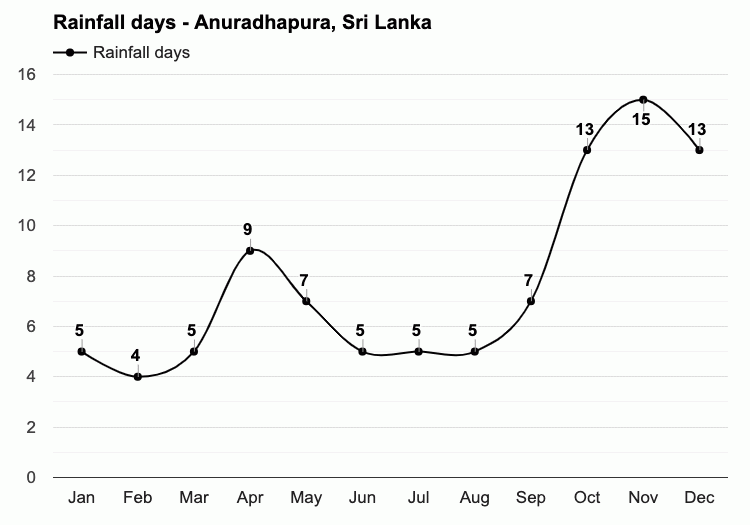
3 POPULAR SRI LANKA CULTURAL TRIANGLE ITINERARIES
- Day 1 Cultural triangle itinerary: Colombo/Anuradhapura/Sigiriya-Meet and greet by Seerendioity tour representative ane leave for the hotel in Sigiriya, en-route visit the historical city of Anuradhapura.
- Day 2 Cultural triangle itinerary: Sigiriya/Polonnaruwa/Minneriya national park- visit Sigiriya rock fortress, Minneriya national park and Polonnaruwa historical city from your hotel in Sigiriya.
- Day 3 Cultural triangle itinerary: Sigiriya/Dambulla/Kandy/Colombo-Leave for Colombo via Kandy, en-route visit Dambulla cave temple and tooth relic temple.
Sri Lanka cultural triangle tour starts in Colombo or at any other places convenient place of your choice, but the pick-up location should be within Colombo, if the pick-up location is far away from Colombo there will be supplement charge for the transfer.
The pick-up location and time will not affect the tour at all, because this is a private tour and vehicle is reserved only for your group. You will not be a part of a big coach, having a private vehicle for the tour means that you can enjoy the tour while having maximum privacy, the tour will run at your pace. An air-conditioned modern vehicle will be allocated for the tour and the same vehicle with the same chauffeur guide will be allocated until you finish the entire circuit.
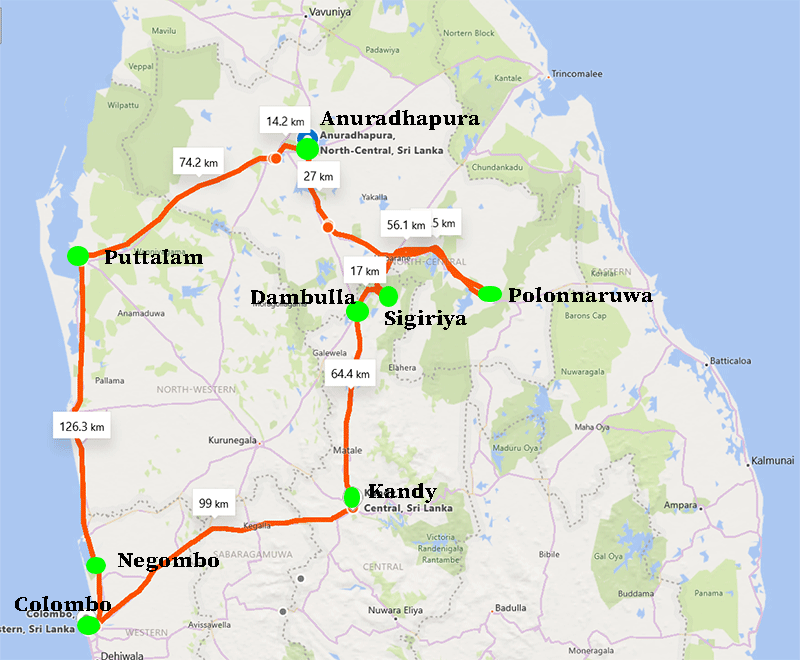
HOW MUCH DOES IT COST FOR THE CULTURAL TRIANGLE TOUR? US$ 190.00 P.P
CULTURAL TRIANGLE CITY TOUR SRI LANKA
CULTURAL TRIANGLE CITY TOUR: VISITING MINNERIYA PARK
There is a great opportunity for wildlife enthusiasts to explore Sri Lankan wild animals during the cultural triangle tour. On the second day of the cultural triangle tour, you can find time to visit Minneriya national park, here you can witness a large number of wild elephants. Wild buffaloes, monkeys, crocodile, wild boar, deer are some of the very common animals here. Minneriya is an optional activity and it can only be done if time permits you to do it.
IMPORTANT FACTS ABOUT CULTURAL CITY TOUR SRI LANKA
The time is taken for the tour is unpredictable due to the traffic and other circumstances, the time mentioned above is only based on rough calculation. If you any time constraints, due to the departure flights, appointment etc, please inform us in advance, so that we can plan your Sri Lanka Cultural Triangle Tour accordingly.
Please contact us at least a day before your Sri Lanka Cultural Triangle Tour so we can easily arrange our vehicles and guides. Thank you for your cooperation. We do pick up from 40+ hotels most of them on the west coast beaches.
The Sri Lanka Cultural triangle tour can be booked with all categories of hotels such as five-star hotels, four-star hotels, three-star hotels… however, this tour package planned with four-star compatible hotel accommodations. you will be notified the hotel name before finalizing the Sri Lanka Cultural triangle tour. The rate can make a notable difference across difference hotels categories.
DAY 1 TOUR TO CULTURAL TRIANGLE CITY SRI LANKA: COLOMBO-DAMBULLA-SIGIRIYA
After the breakfast leave for Sigiriya, En-route visits Dambulla cave temple and Sigiriya rock.
EXPLORING DAMBULLA TEMPLE ON THE CULTURAL TRIANGLE CITY TOUR
Dambulla cave temple is the first tourist attraction to visit on this 3 days Sri Lanka tour. Usually, the tourist visits it before heading to the hotel in Sigiriya.
The best way to understand the rich historical past is to hike the Dambulla cave temple, preferably at sunrise or in the afternoon in order to avoid the excessive heat and get the best view. Stone steps that are carved into the hillside believed to be many thousands of years old. There are two routes to make the hike to the Dambulla golden cave temple; however, the tickets are issued at only the new entrance, which is to be found 2 km off the main road.
It is easy to imagine how practical it had been as a safe place to hide for the King. The temple believed to be the hiding place of king Walagambahu for 14 years, during the troubled period, due to the south Indian invasion in 1st century BC. The temple is built in a group of granite caves that hang onto the southern slope of the Dambulla Mountain, which is only 1 km from the city. The comparison between how it had been and what we can see today is a constant part of the experience at Dambulla cave.
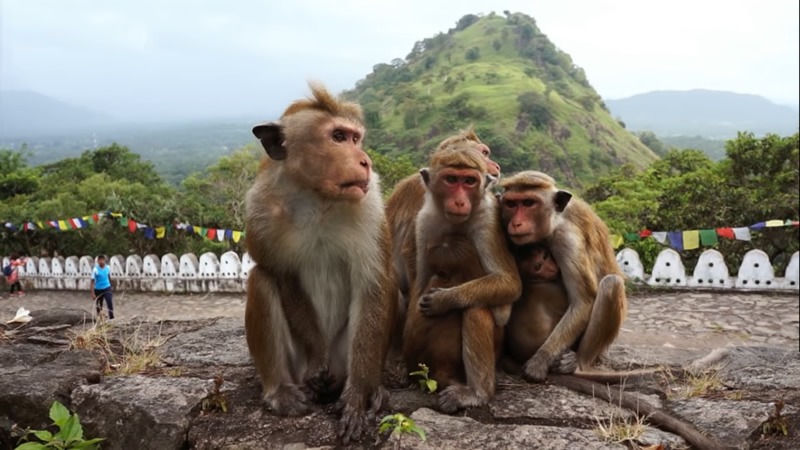
VISITING SIGIRIYA ROCK ON THE SRI LANKA CULTURAL TRIANGLE CITY TOUR
From the rock cave temple, head to the main road (A9, Kandy-Jaffna) that cuts through the town, in the direction of northern Sri Lanka. The distance from Dambulla to Sigiriya is 17km and the journey takes between 20-30 minutes.
By the time you reach Sigiriya, it will be around 01.00 pm and it is time for the lunch break, and it is best to have a break after having one-hour footwork at Dambulla cave temple. In fact, the best time to hike Sigiriya is in the morning or afternoon as the sun goes down, due to the heat.
CULTURAL TRIANGLE CITY TOUR: VISITING SIGIRIYA ROCK
Sigiriya hike would more strenuous than the hike at Dambulla cave temple, and Dambulla was just a rehearsal of Sigiriya adventure. Sigiriya is an essential part of every Sri Lanka tour that includes cultural triangle, Sri Lanka. Sigiriya is a tourist hotspot on the island and rarely miss by the visitors of Sri Lanka; therefore Sigiriya has been included in this Sri Lanka 2 days tour. In fact, a visit to the cultural triangle Sri Lanka would be meaningless without a visit to Sigiriya.
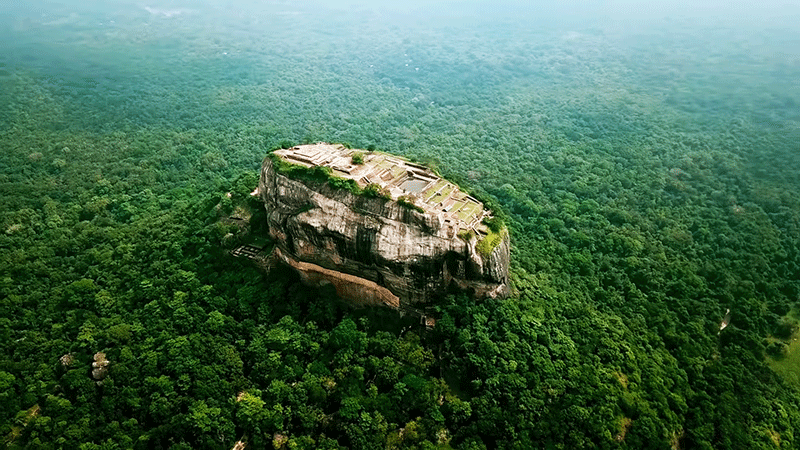
Day 2 CULTURAL TRIANGLE CITY TOUR
After the early breakfast, you can visit Minneriya national park and venture on an elephant watching tour, however, this is an optional activity. Minneriya national park safari is highly recommended, and it allows the visitors to have a close look at Sri Lank wild animals. Minneriya national park is popular for wild elephant sightings and a large number of wild elephants can be spotted here, especially around the Minneriya tank.
CULTURAL TRIANGLE CITY TOUR: VISITING SPICE GARDEN
After the safari at Minneriya national park, it is time to move to the next UNESCO world heritage site of cultural triangle Sri Lanka, known as Kandy, where you visit tooth relic temple. On the way to Kandy from Sigiriya is the popular laid-back village known as Matale, which is most popular for agricultural products such as spices, vegetable and fruits.
You have the liberty to make a stop at one of the spice gardens here and see the large array of spices and herbs grown here. The spice garden in Matale is a novel experience for most travellers, and it is a great opportunity to witness the most spices and herbs in their natural environment. It is a well planned and maintained garden with spices such as nutmeg, pepper, chilli, cardamom, vanilla and many other spices and herbs.

KANDY CITY TOUR
You will do a Kandy city on the 2nd day of the cultural triangle tour. The city tour includes a couple of visits to the downtown Kandy, Kandyan cultural show as well the tooth relic temple.
VISITING TOOTH RELIC TEMPLE
After the Spice garden, the next stop on this Sri Lanka 2 days tour in Kandy, which is the cultural centre of Sri Lanka with a most sacred Buddhist temple on the island. The temple of the tooth relic is a tourist hotspot and visited by thousands of locals as well as foreign travellers. Tooth relic temple is one of the oldest temples in the island featuring typical Sri Lankan architecture and building techniques.
Day 3 SRI LANKA CULTURAL TRIANGLE ITINERARY:
After the leisurely breakfast leave for Colombo, en-route visit Royal botanical garden, Pinnawala elephant orphanage and tea factory.
VISITING TEA FACTORY
After the tooth relic temple, the journey continues along Kandy-Colombo main road, in the direction of the west coast from the mountains. On the return journey, you have the option to visit a tea factory and tea plantation. The management of the tea factory opens its door to the visitors to witness the production process in the factory. The in-house guide of the tea factory explains to you about all the steps of the tea manufacturing process and allows you to sip a freshly brewed cup of Ceylon tea. And if you like you can purchase the fresh Ceylon tea at the tea shop of the tea factory.
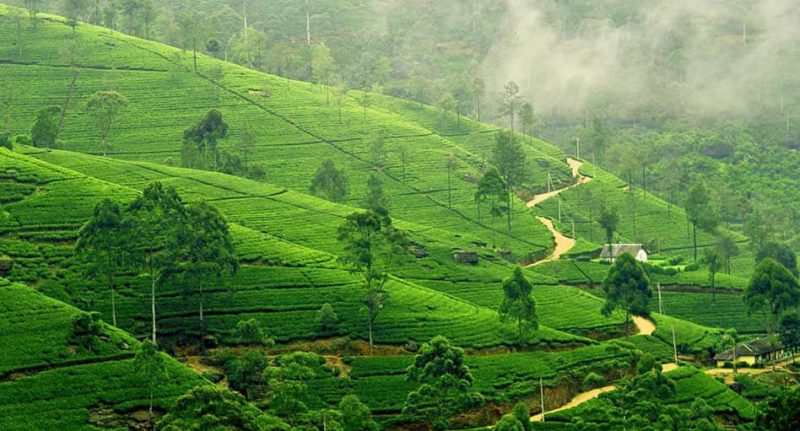
The journey from tea factory to Colombo takes around two hours; in between, there will be few stops to make it comfortable for you however it is subjected to your requirements. The return transfer can be organized to the airport or to the hotel of your choice. We often end the tour at the airport on request of guests because some of them plan this Sri Lankan 3 days tour towards the end of the holiday package and plan to reach the airport after the tour.
CAN I DRIVE TO BEACH RESORT AFTER THE CULTURAL TRIANGLE CITY TOUR?
Usually, the tour ends in Colombo, but there are some other customers who with proceed to hotels on the west coast and south coast, places like Bentota, Hikkaduwa and Galle. We are happy to arrange your transfer to the beach resort from Colombo, however, there will be a supplement charge due to the long drive from Colombo to the west coast resorts.
After a memorable Sri Lanka 3 days tour you will return to Colombo at around 6.00 pm. Please don’t hesitate to contact us if you require more information on this Sri Lanka 3 days tour. The Sri Lanka 3 days tour can be combined with any other tours offered by seerendipity tours. And this Sri Lanka 3 days tour can be customized to suit your requirements.
THINGS TO KNOW BEFORE VISITING CULTURAL TRIANGLE CITIES OF SRI LANKA
- Sri Lanka 3 days tour includes many important historical places (Polonnaruwa historical site, Dambulla cave temple, Kandy tooth relic temple) therefore, proper temple dress code is essential to visit the Buddhist temples.
- This is a private tour, therefore, the entire tour itinerary is customizable.
- There will be 2 overnight stays during the trip (1 overnight stay in Sigiriya and 1 overnight stay in Kandy).
- Accommodation in 4* standard hotels with daily breakfast and dinner.
- Accommodation in an air-conditioned car or van on a private basis.
WHY YOU SHOULD BOOK THE TOUR TO CULTURAL TRIANGLE CITIES OF SRI LANKA WITH SEERENDIPITY?
Seerendipity Tour is an entirely locally owned travel company with a head office in Colombo. The highly experienced local staff is a key strength of Seerendipity Tours, and they can plan your dream holiday to Sri Lanka.
The best price guaranteed for you Kandy one day trip
When you book a tour with us, you directly book the tour with the local company, which means there are no middlemen and therefore you can guarantee the best price. Simply get in touch with us and let us know when you travel and what you like to see.
Plan your best Kandy one day trip with expert
Our staff makes a personalised programme for you, which you can change until you find the best package for you. You can also browse our existing tour packages for inspiration; all our ready-made tour packages are customizable and can be tailored to meet all your expectations. Write to us at admin@seerendipitytours.com, tel. 0094-77-440977, WhatsApp 0094-77-4440977
Please support us
We have put a lot of time and effort into compiling this blog post. Please be kind enough to leave your very own comments.

